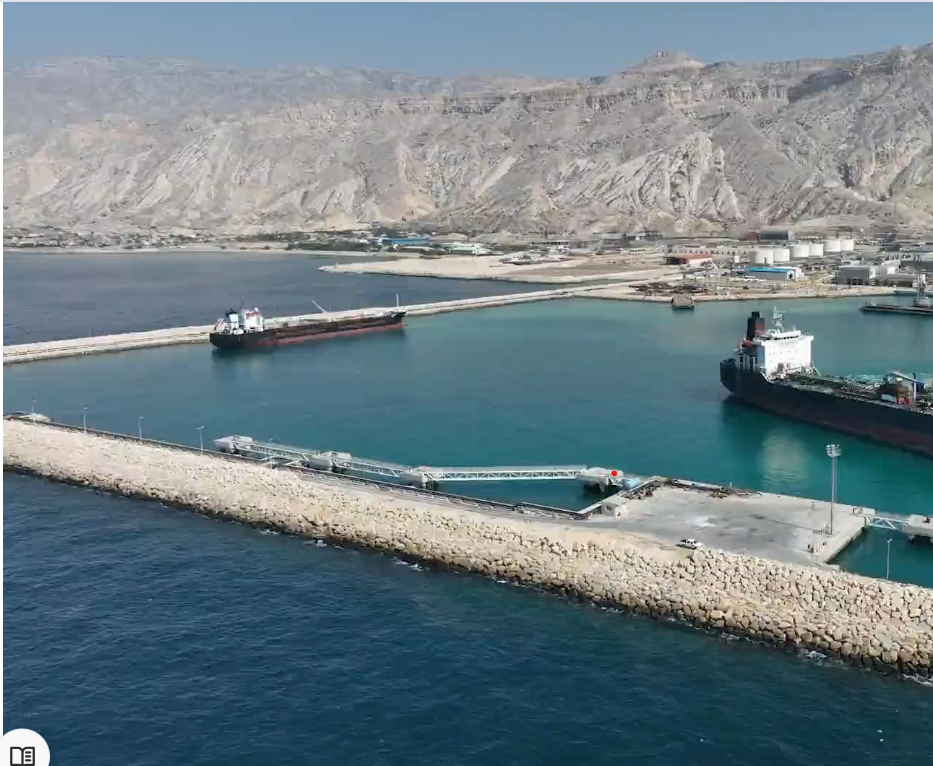Location: 27°35’47.3″N 52°29’47.6″E
Farasakoo Port pilot boarding position : 27 34.80 N, 052 29.80E
Navigation is not permitted within a radius of 2 n miles of the SPM Navigation is not permitted within a radius of 2 n miles of the SPM without a pilot embarked without a pilot embarked.
Berth Selection:
- Tankers are assigned to specific berths based on their cargo type (e.g., fuel products, LPG gas) and size.
- Berth No. 1 accommodates smaller vessels, while Berth No. 2 handles larger tankers.
- Safe Draft and Depth:
- The safe draft (maximum allowable draft) for tankers at Berth No. 2 is 12.7 meters.
- The minimum depth at the entrance to the breakwater (the submerged structure protecting the harbor) is 14 meters.
- Loading Procedures:
- Fuel product loading occurs at Berth No. 2.
- LPG gas loading is exclusively permitted at Berth No. 1.
- Tankers with a deadweight tonnage (DWT) of up to 86,000 tons have been safely loaded at Berth No. 2.
Farasakou covers an area of over 50 hectares in the western part of Site 1 within the Pars Energy Special Economic Zone. 1,000-meter shoreline and Its basin 54 hectares.
Nominated as the main port of the country in exporting of petrochemical products
The only port for exporting of hot liquid gas in the country with more than 550,000 tons track records in the
last 3 years.
The owner of the biggest loading/unloading truck terminal in the country with a capacity of 850 trucks per day

The oil product terminal comprises six fixed-roof tanks with a total capacity of 8,000 cubic meters and two additional fixed-roof tanks with a capacity of 1,000 cubic meters each, resulting in a combined capacity of 50,000 cubic meters.
The terminal handles the transfer of products (both from tankers to storage and vice versa) simultaneously for up to 62 tankers. It also features pumping stations and transfer facilities for product movement between storage and ships (loading terminals) at a rate of 2,000 cubic meters per hour.
All related facilities include firefighting systems, power distribution, cathodic protection, lightning arrestors, and infrastructure utilities such as water, electricity, gas, and communication networks. The terminal also has heating facilities for the stored products in tanks and pipeline systems (H.O.P).
Additionally, the terminal enables direct dispatch of light oil and gas products from tankers to ships.
The pumping and transfer system for company-owned tanks has sufficient capacity, allowing ship loading within a maximum timeframe of 36 hours.
The Farsco Asaluyeh Company was established with the aim of creating a specialized port and terminal for petrochemical and oil and gas products in Asaluyeh. The company provides various services, including terminal and warehouse services, port operations, and marine fuel supply in the Asaluyeh region. After completing the first phase of development in 2014, which included the operation of storage facilities and some port infrastructure, the company gained significant capacity in the mentioned services. Following the completion and start of operation of the second phase by the end of 2015, the port transformed into one of the largest non-governmental specialized ports for oil products.

Currently, Farsco is implementing the third phase of the comprehensive development plan for the port and terminal. Upon completion of this phase, the port’s annual capacity will reach 18 million tons, and the terminal’s dry bulk capacity will be approximately 1.1 million cubic meters. Farsco’s strategic location, modern facilities, and safety equipment make it an attractive destination for domestic and foreign investors in the oil, gas, and petrochemical industries.
Ensuring customer satisfaction based on maintaining and improving the quality of services and products through offering all terminal and port services related to petroleum, gas, and petrochemical products.
These services include buying and selling storage, transit, export, and import of oil, gas, and petrochemical products.
Additionally, providing fuel supply and bunkering operations to regional vessels in both dry and maritime areas within the Pars Energy Special Zone. The company also offers services for maintenance, replacement of parts, and essential repairs for vessels, as well as fundamental repairs for refinery and petrochemical equipment.